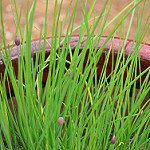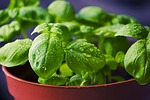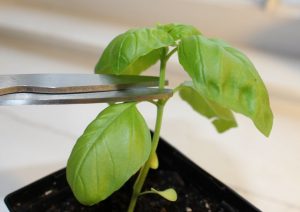

Cultivating
Chives are one of the best herbs to grow for a first timer. They can thrive in smaller pots. They are not as sensitive to temperature fluctuations, and while they prefer full sun, chives can still grow with less sunlight. Tips of foliage will turn yellow if the plant is too dry. Pinch off the flowers as this will increase the flavor in their hollow green leaves.
Harvesting
Once the plant is 6 inches tall, cut leaves as needed leaving at least 2 inches of growth above the soil.
Cooking
Chives have a mild onion flavor and can be added to just about any savory dish. Here are some ideas for inspiration:
- Add to an omelette
- Add to homemade baked bread
- Flavor a cream cheese
- Spice up a soup or stew
- Add to a warm or cold potato salad, or top a baked potato or fried potato skins

